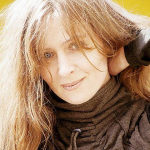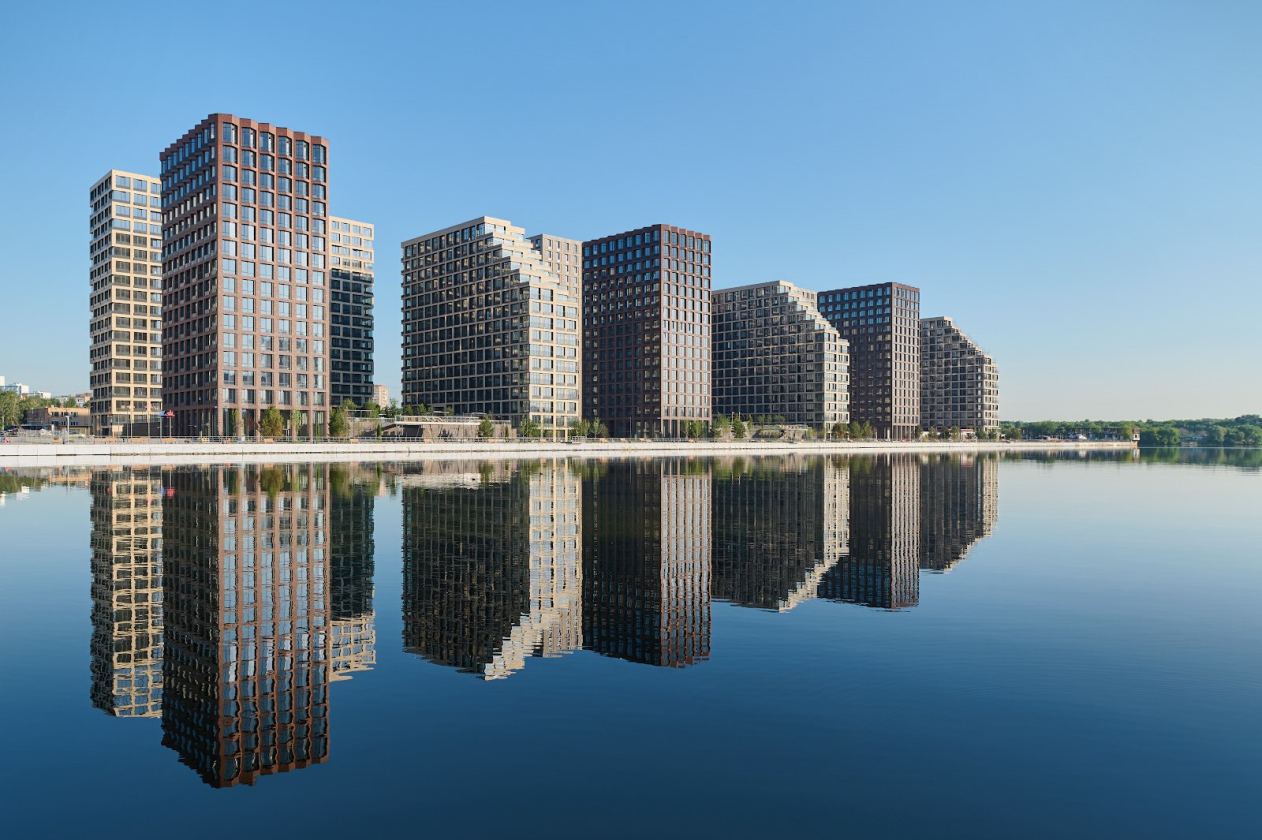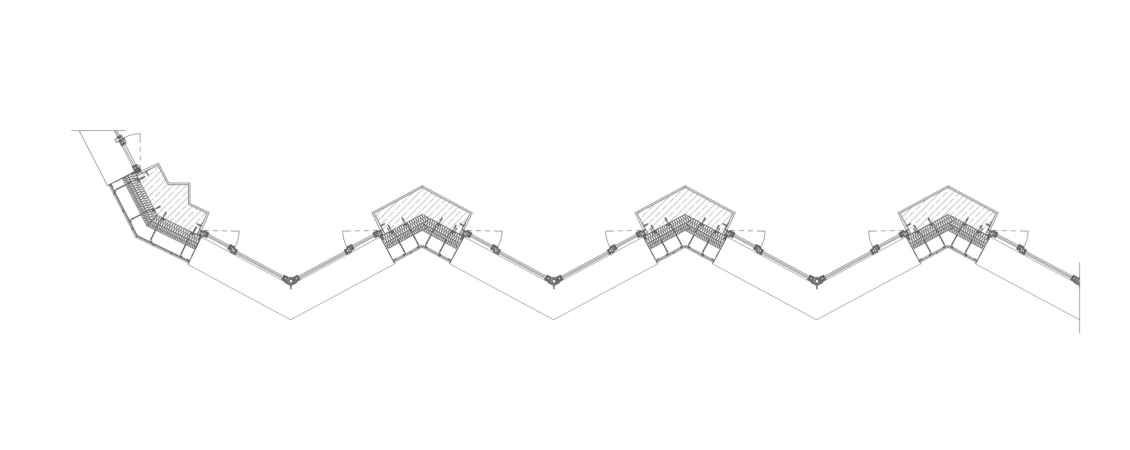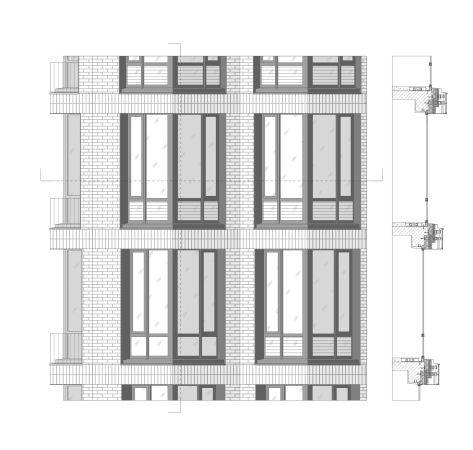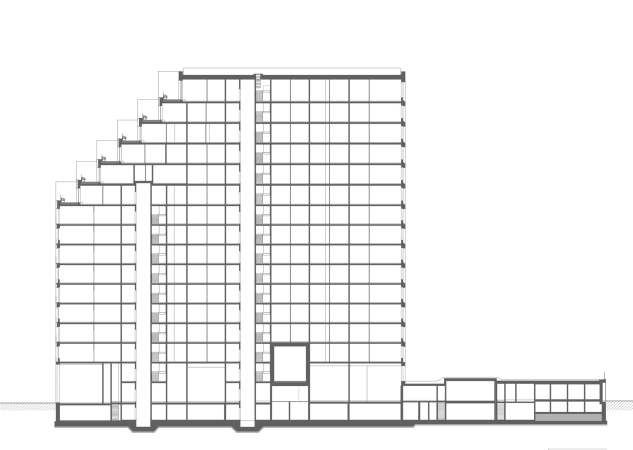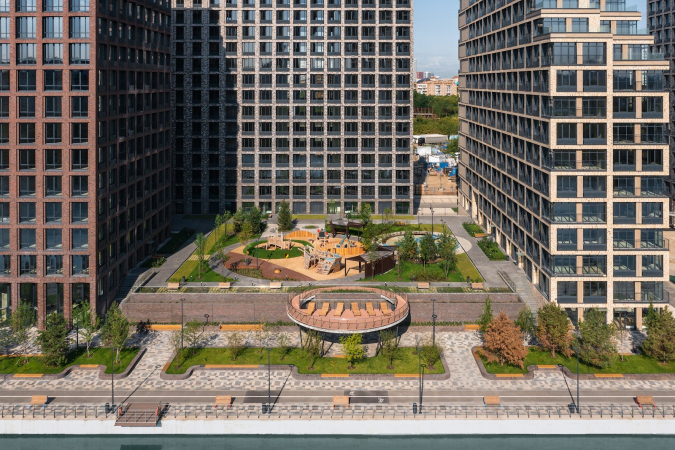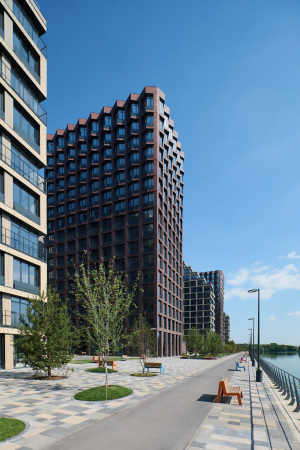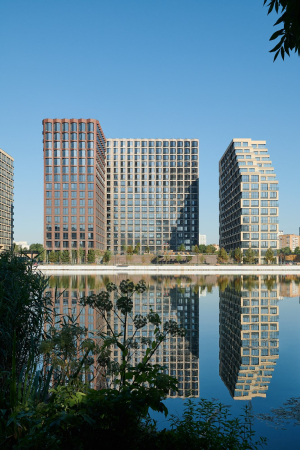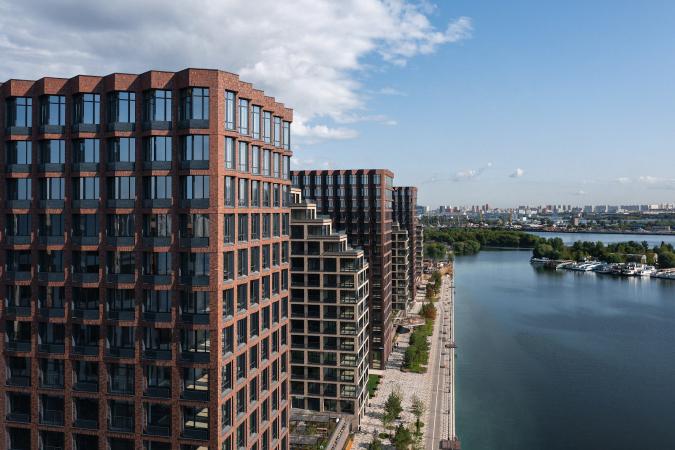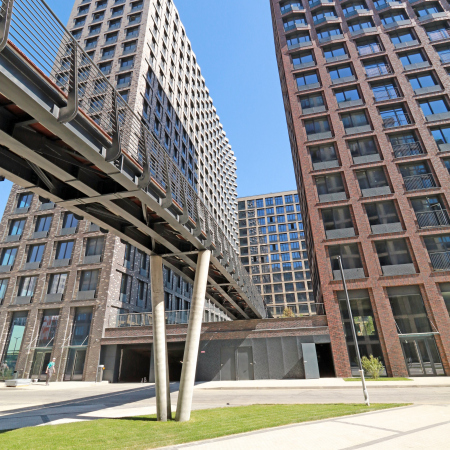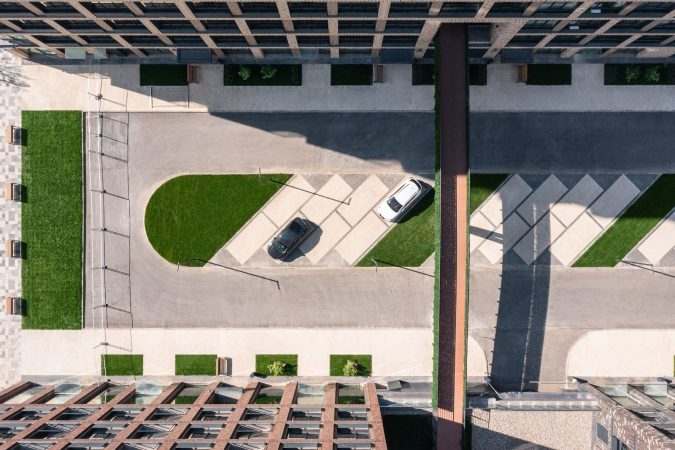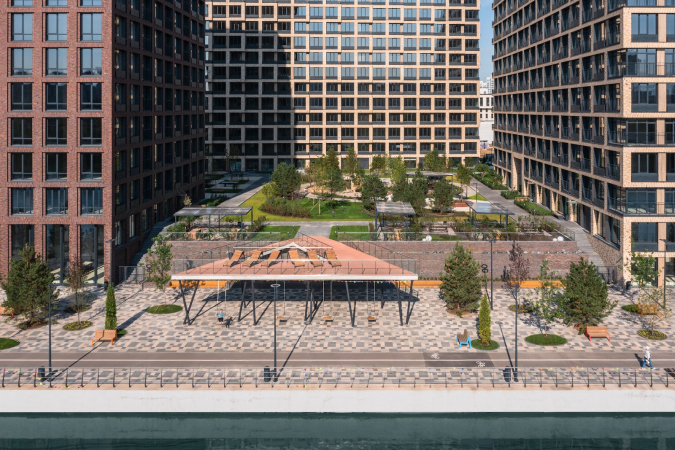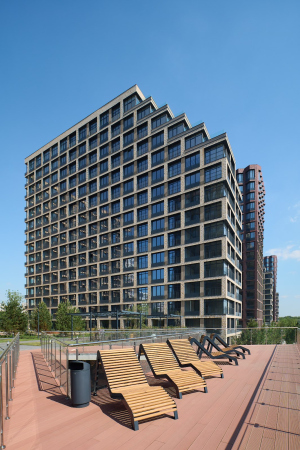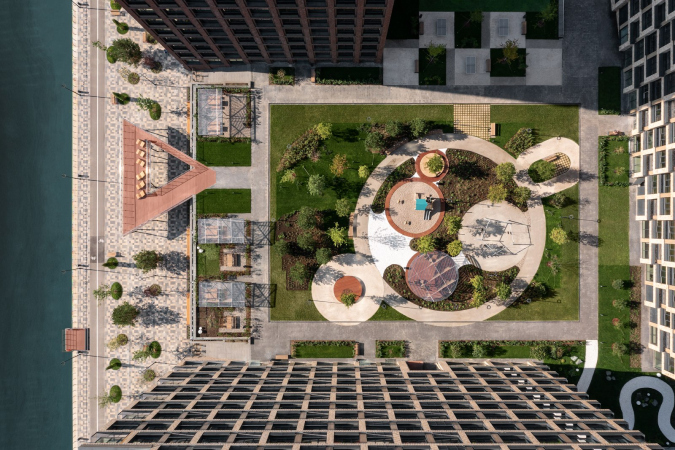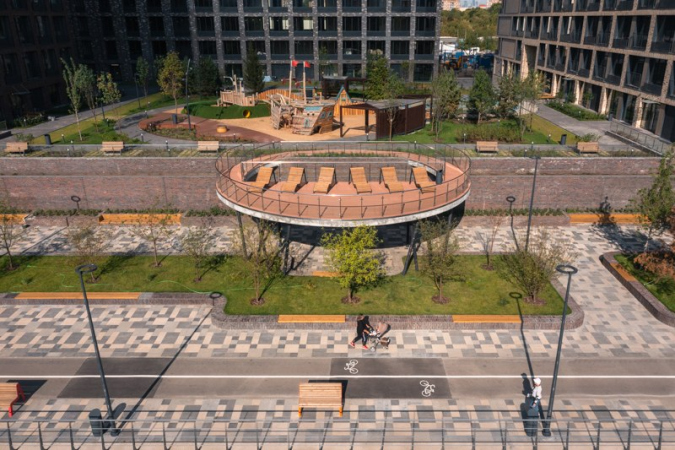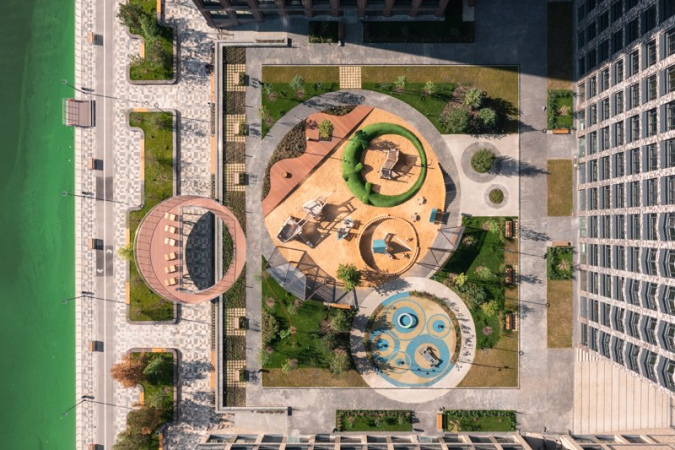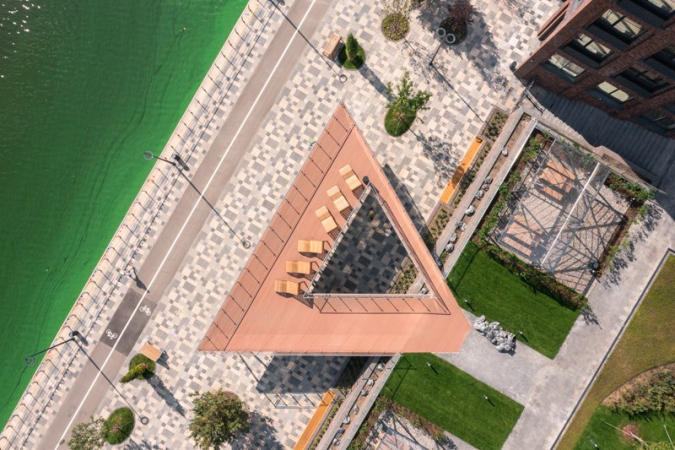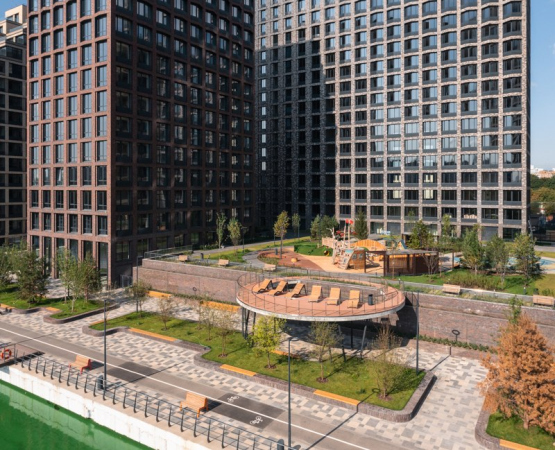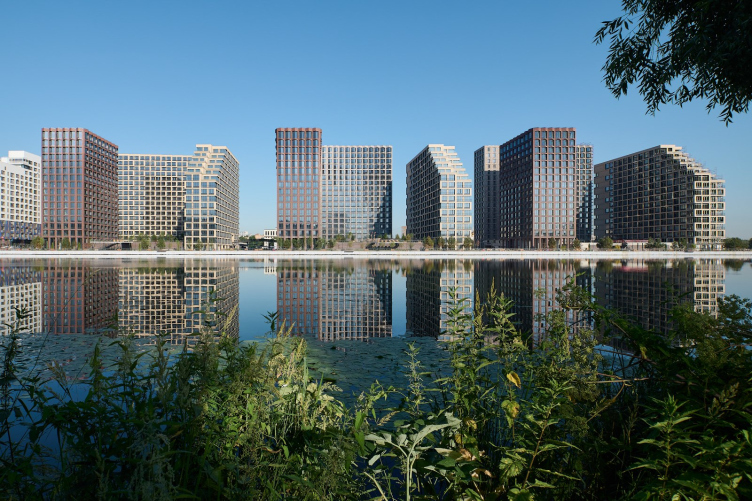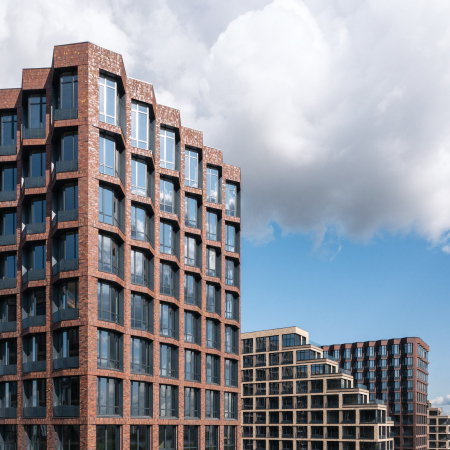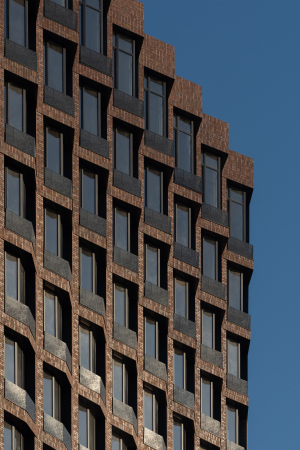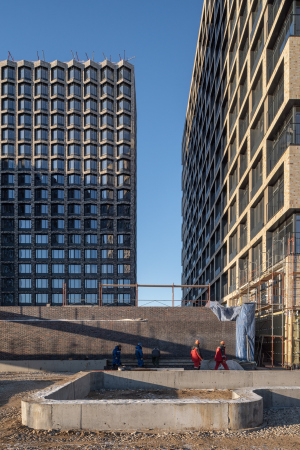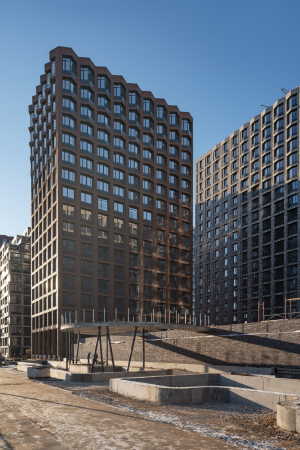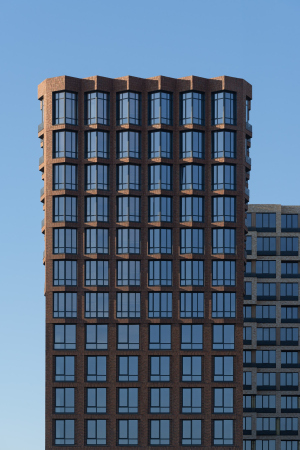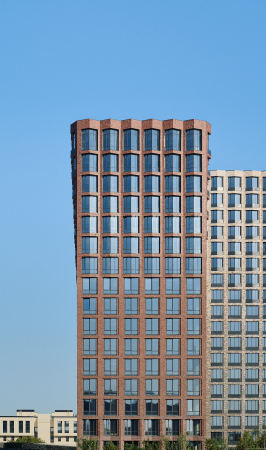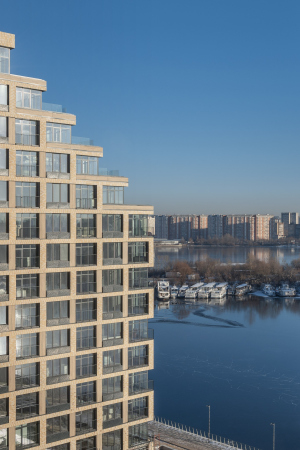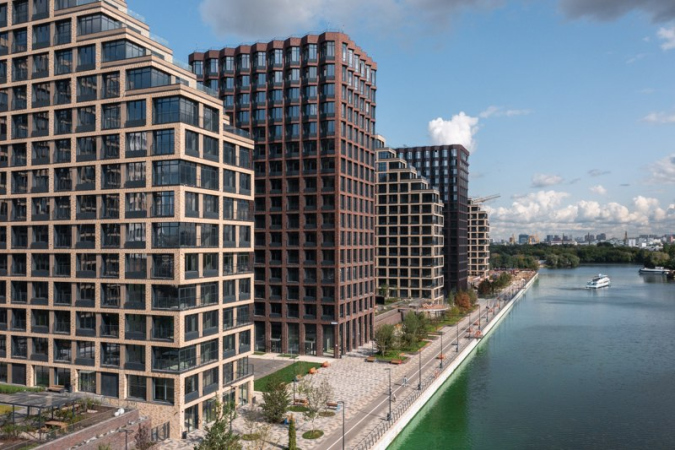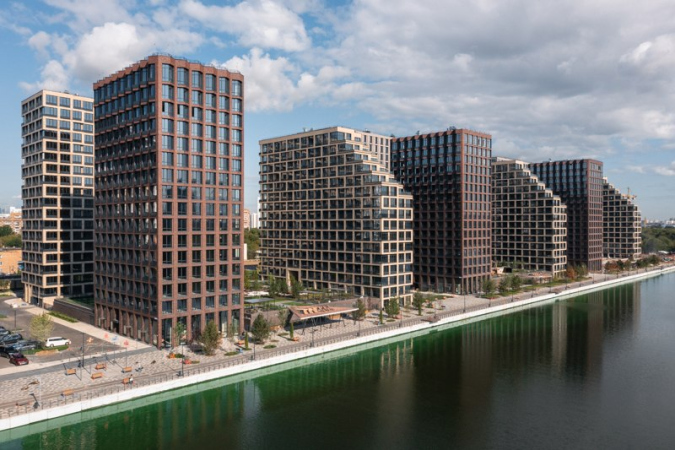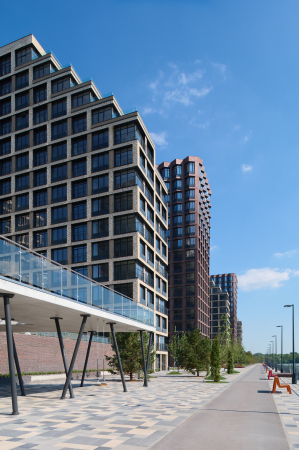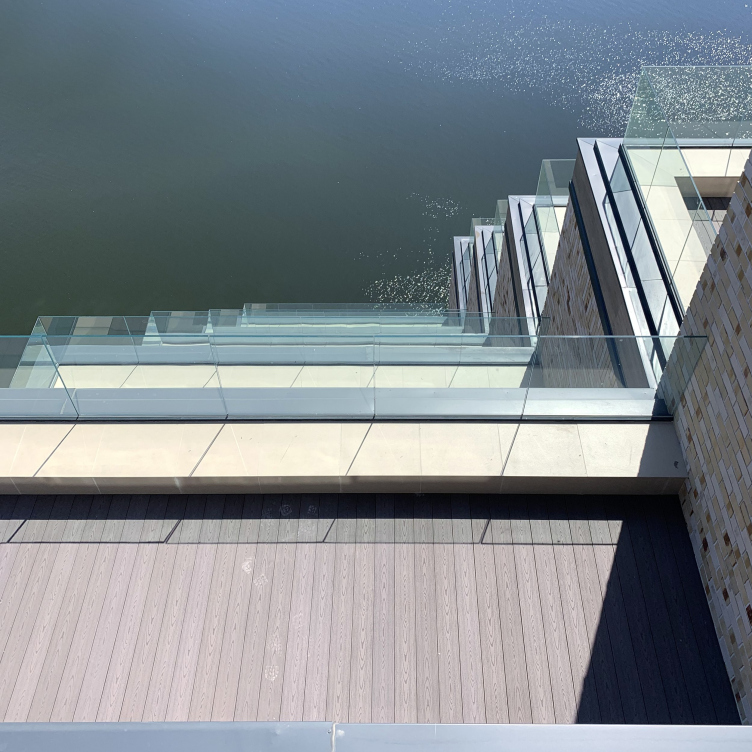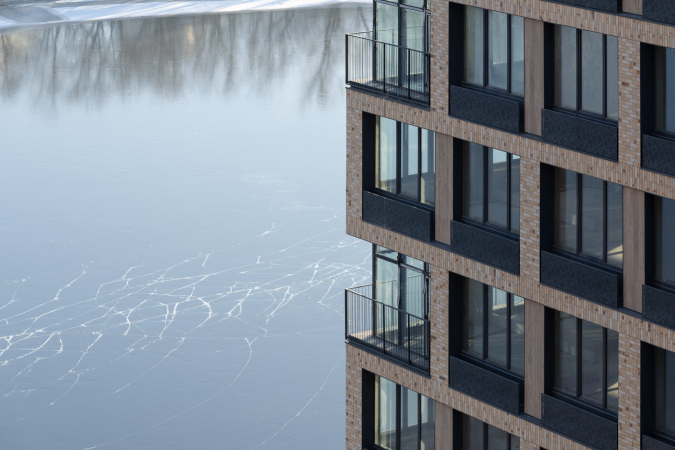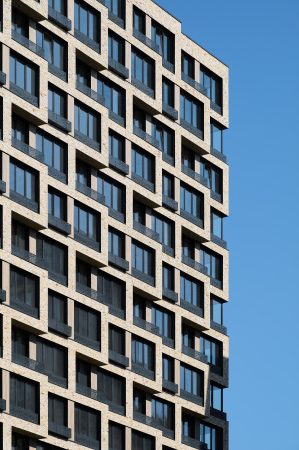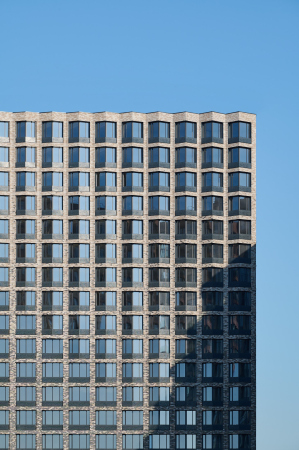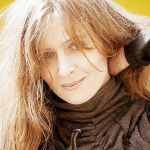The overall structure of “River Park” appears to be exceptionally lucky – these are three blocks with an open contour. This means that each block consists of three individual houses, there is a passage between them, yet they are perceived as a single city block.
Interestingly, a “theater” principle is used here. The block has three walls – the backdrop and two wings – and no front wall, and the “spectators”, sailing the riverboats or walking down the lower embankment, pass by three “theater stages” because the yards are raised on stylobates, which, of course, host underground parking garages. From the side of the stylobates, however, you can go down two staircases, left and right of the yard, i.e. like from the stage to the orchestra stalls, that is, to a very cozy waterfront. The part of this waterfront adjacent to the housing complex was also designed by ADM.
The blocks are separated by driveways that also serve as public boulevards, open, just as the waterfront, to the city people: they lead from the western part of the complex and from the “old district” to the bank of the backwater. There are pedestrian bridges thrown above the driveways that connect the blocks on the upper levels of private yards that are accessible only to the residents and their guests.
These pedestrian bridges are the architects’ pride. They start in the square arches of the beige buildings and connect them to the passage between the houses of the next block. This way, the residents of “River Park” and their children will be able to freely move around the three blocks on the second tier without having to get down to the carriageway and without interacting with the city space.
The yards, just like the blocks on the whole, are organized in a very theatrical manner. You exit to the yards on podiums from high lobbies. There are pine trees in the yards (the architects specially provided depth of the soil sufficient for the roots of the trees); there are also playgrounds, and, closer to the waterfront, there are barbecue spots with all the related equipment. The most imposing-looking elements of the yards are sundecks – glass bridges with boardwalks set above the waterfront, with sun loungers to bask in the sun and sunbathe. These are not bridges in a literal sense of the word, they do not lead anywhere, but make a loop, like in the Zaryadye Park. You can walk on these bridges in a circle, in a triangle, or in a square – each yard has a sundeck of its own unique shape. And their meaning, according to Andrew Romanov, is to make you feel closer to the water. This transgression of the residents’ semi-private space is essentially akin to coming up on stage.
The interpenetration of courtyards and embankments, semi-private areas and public space is an interesting approach. On the one hand, visual contact between the residents and the city people appears. On the other hand, outside people cannot get into the yard from the waterfront, but you can easily do it the other way around (through the transparent fence, the owners of the “River Park” apartments have access with a card). There are also private spaces of glass terraces, which are 100% private spaces. The hierarchy of private, semi-private, and public spaces is well thought out here.
If we are to continue the theatrical associations, then the waterfront plays the part of the orchestra stalls. In any case, the design solution of a multilevel city in such a location is Andrew Romanov’s indisputable success. Even if the houses did not possess this individual carefully designed plastique, the structure of the complex alone would have been enough for its successful organization. But the houses are indeed different and interesting in their own ways.
We have used three types of houses in River Park. The first type is the red tower. Its facade is constructed like this: the building starts from a simple grid and then goes to a folded texture. The bay windows at the top are volumetric, and at the bottom they seem to dissolve into the plane of the wall. We have three such towers, and they protrude to the embankment. The second type is a beige terraced house, on which, at the request of the client, we made a cascade of terraces facing the water. There are also three such houses. The third type consists of buildings with recessed bay windows. The same principle of gradual increase in the volume of bay windows to the upper floors is used here, but unlike the towers, this happens asymmetrically, making the facade look more dynamic.
This is how a clearly structured rhythm of the volumes appeared: the vertical red buildings, opening upwards in a flower-like fashion, and the light-colored horizontal buildings, whose side ends are clearly shaved off with terraces, are like two poles or two diametric opposites. The further building ties them together like a background – partially absorbing all the techniques, it becomes the transition link that reconciles the two poles. Meanwhile, if you look from the opposite bank of the backwater, the alternation is read very clearly, like a parade order.
“River Park” housing complex: blocks 1-3
Copyright: Photograph © yaroslav Lukyanchenko / provided by ADM
“River Park” housing complex: blocks 1-3
Copyright: Photograph © yaroslav Lukyanchenko / provided by ADM
The plastique of the red buildings is especially interesting. In the lower floors, the triangular contour of the windows is sunken in, and the blades stand out at an angle – the facade receives a zigzag outline. In the middle, the surfaces of the piers and the windows get even, and higher up the angle of the windows becomes more and more prominent with each next floor. Thus, looking from the bottom up, we observe a progressive inversion of volumes.
This design solution is supported by a slight change in the apartments’ layouts from floor to floor – which, one must recognize, is one of the favorite techniques of ADM architects. This technique, however, is somehow akin to a fortress tower, some kind of a dungeon that “safeguards” the city blocks on every “outside” corner, which is the southern one, turned to the city.
The arrangement of the red brick buildings is tied to a strict grid, and the corners are “fastened” with brick blades. In the light-colored buildings, the windows are grouped in twos horizontally by a darkened recessed pier with a “wooden” texture. However, the windows do not form any characteristic “bands” – rather, what we are seeing is a large zig-zag pattern, particularly prominent at the corners, where glass alternates with brick contour. It seems that the zigzags echo the terraces at the ends of the buildings: the houses seem to “open up” to the river before our very eyes, giving way, and minimizing the materiality of their silhouette.
The terraces located on five floors, from the eleventh to the sixteenth, are definitely a successful solution. They are spacious enough to offer a view of the water and the city skyline.
“River Park” housing complex: blocks 1-3
Copyright: Photograph © yaroslav Lukyanchenko / provided by ADM
The side ends of the light-colored buildings are divided in two parts, so that one cannot see the other, which means that the space is becoming even more private, like the kind that we would expect from a dacha or a vacation rental, which, of course, reminds of the Mediterranean. The fences are made of glass, they are impost-less, and they tactfully provide security without intruding on the panorama. The terraces turned out to be a hit, and the apartments with them were sold very fast.
ADM have a great experience in designing “tactile” facades for high-end residential complexes in the center of Moscow, and here they used it to full extent in this mass-housing project, although still closer to high end. All of the facades are clad in Hagemeister brick. The red towers alternate with beige ones, both facades are not monochromic but present mixes of exquisite colors. The buildings situated in the depth, grow lighter from the bottom upwards from brown to a sandy color.
Many of the apartments have windows reaching to the floor with metallic railings. Wherever the windows are of the regular kind, all the openwork metallic lattices, masking the air conditioning units, are custom-designed. Some of the piers imitate wooden panels. All this together creates a well-detailed surface, interesting to look at, while the use of natural and durable Klinker brick, together with a clearly articulated structure and other authors’ ideas promises a long life for the architecture of River Park.
